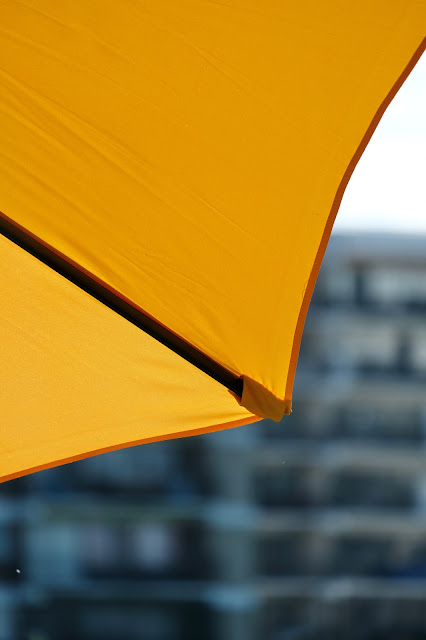Photos Daniel M : Olympus OM-D E-M5 Mark III / M.Zuiko ED 14-150mm F4-.6 II; Oly Art Effects
26 juin 2023
23 juin 2023
The Fujifilm X-H1: the pro that never had a chance! (revised)
This is a story that can be narrated many times for all the people and for the things they have created at a wrong moment but that may have been successful if things have worked differently. Everybody knows at least a story like that. The Fujifilm X-Mount series model X-H1 is certainly one of those. This Fuji camera model was especially designed and produced to be the ultimate and first professional X-mount model that is integrating great photographic and video performances, long durability, and enhanced reliability, and carefully ergonomic and interface studied design. It was the first Fuji X-mount series model that is also integrating an internal body stabilization system (IBIS) following a long waiting amount many APS-C image sensor format users.
Presented in February 2018, the Fujifilm X-H1 hit the photographic market the next month in March 2018 and was not received with all the enthusiasm from the photo reviewer community as we may have expected at the time partly because the hybrid digital market was in full swing with new models from different manufacturers introduced at a frenetic pace at this very moment of time. Furthermore, there was always that contingency and a fierce competition between the three image sensor formats: MFT (Micro Four Third), APS-C (17 X 24mm) and the so-call "Full Frame" (24 X 36mm).
In the compact camera professional photographic gear, the market has been dominated for decades by mainly two camera manufacturers: Canon and Nikon although Leica traditionally hold its own partisan faction. Yes, there were other competitors on a marginal base that try to get a part of the cake like Minolta, Olympus, Pentax but it remained the Canon-Nikon sandbox for years. That phenomena still exist today with the addition of the aggressive and mighty Sony who is shaking that dual domination.
The professional APS-C image sensor format cameras are not new and, for a time, were well serve by Nikon who was claiming that it was the new obvious format in the digital world of photography for many reasons that the same Nikon have now a tendency not remembering today... Even Canon had its own APS-H format that have been erased in favor of the digital 135 (35mm) format revival.
What is very different about Fujifilm is that their X-Mount series system was already a very mature line of products with several camera models and lenses already available and often renowned for their optical quality and good construction. So, the Fujifilm X-H1 was integrated in a complete line of already existing product offer instead of the reverse for it has been for Nikon that never have fully developed a complete line of (pro) lenses for its APS-C pro cameras. It is true to say that Nikon had already a complete line of optics that dated from the 35mm analogically era.
It is true to say that the Fujifilm X-H1 was a big piece of photo gear but it cannot be seen as a real disadvantage in the view of the professional users who often prefer to work with larger prehensile camera body and vertical grip optionality. Fujifilm have decided to maintain the use of its NP-W126S battery pack but have proposed that their vertical power grip been equipped with two additional NP-W126S that triple the autonomy of the X-H1. Same for the two memory cards insertion slots installed in the camera. All these characteristics qualify largely the X-H1 for a daily intensive use.
For those who had the privilege to use the Fujifilm X-H1 on a frequent if not frenetic bases, their appreciation were largely favorable as a photographic and videographic tool.
What really have obsessed the small photo Web planet was the introduction just six months later (September 2018) of the new Fujifilm X-T3 camera model which carry a new 26MP image sensor alongside with interface improvements such as the autofocus algorithm. Even without any internal body stabilization system (IBIS), that will appear later the X-T4 model, the X-T3 was perceived as a step forward of a new generation of camera models from Fujifilm. And curiously Fujifilm have decided to get rid of their X-H1 stock inventory by offering them at an outstanding discount price.
Here are some Fujifilm X-H1 factors that have seduced many. First the ergonomics of the X-H1 that correspond to the professional criteria of the larger size camera body that harmonized with most of the "Pro" lenses (which are usually larger than the regular ones). The command dials and the functions button that were sturdier and, again, in larger size. A direct access to the basic photographic parameters. A sumptuous electronic viewfinder (EVF) with an eyepoint of 23mm from the camera's eyepiece in consideration of the photo reporters, the sport photographers, the journalists, and the other action photo shooters that are all relying on EVF most of the time. A very good internal (in-body) stabilization system implantation that not only prevent the photographer shake effect but give a better viewing comfort (especially when doing manual focusing). An interesting approach for the LCD Live View (rear) articulated screen that allow controlled movements for waist level viewing (both horizontally and vertically) and "over the crowd" viewing. A combination of a joystick and a D-Pad control interface. A complete vertical grip optionality with all the principal functionalities. And a lot more characteristics could be added to that partial list.
In term of image output results, the 24MP sensor was performing at its best delivering fine pictures in every situations or contexts. Fujifilm simulations are outstanding especially for photographers that have already an experience into analog-film photography. The autofocus system is competent although all these automated systems have their own limits considering the special needs of each photographer. The exposure metering accuracy and the auto white balance feature are reliable and able to translate a correct light and color atmosphere of the subject (according that you don't voluntarily alter them). The Fujifilm X-H1 can be a nervous camera capable of frenetic rate of picture shooting (for those who to stack numerous similar files on their memory cards). Many Web reviewers have already praised the video abilities of the Fujifilm X-H1, but I cannot speak about a cinematic domain with no real experience.
Only a small fraction of the Fujifilm X-H1 abilities have been presented and discussed here since this is not a full review intended but more a brief overview of its capacities. I won't argue the fact there are other camera models from manufacturer that can surpass the X-H1 performances in different ways. It will certainly happen when Fujifilm will introduce its replacement (X-H2) hoping that this time will be the one that many Fuji enthusiasms will celebrate for a longer period. And hoping also that the "pro" photographic community in general may embrace more notably the Fuji camera model.
There is still a lot of Fujifilm X-H1 cameras haunting our photographic planet that are fulfilling their primary task of taking beautiful pictures (and videos) in a reliable and performing fashion. It is a very mature photographic tool that their owners have learn to appreciate at its right value of a real "pro" companion. It just has missed a good timing...
© Photos Daniel M: Fujifilm X-T20 / XC35mm F2 & X-E3 / XF 50mm F2 WR ( X-H1 illustrations); Fujifilm X-H1 / XC50-300mm OIS II /XF50mm F2 WR / XF55-200mm OIS / XF27mm F2.8
12 juin 2023
Diagonal Meaning
Should you separate my vision of this world
If only I could fractionate my heart
For sure I will be a consecrated queen!
Photo Daniel M: Fujifilm X-S10 / Fujinon XC 50-230mm F4.5-6.7 OIS / Acros Picture Mode
08 juin 2023
More than this!
I can't find better to see in that world
Sitting at the corner observing the passing of life
Clicking in the absurdity of observing
What are we more than this, I don't know!
03 juin 2023
Simplicity vs Complexity: parametric fantaisies
Each time you are anticipating to start a new photo taking session, there is often the question on how to configure your photographic device. Since we can choose and select about anything we want (and even more on what we doesn't know it can be done) through imaging preset bias (and post editing too), it is becoming a very challenging and confusing task.
Nobody can pretend to describe an absolute and universal parametric guideline regarding doing photography but we can imaging that some sort of partial check list may help at least the ones who are asking for and as soon you already have determined which camera and optic you will work with, you may concentrate yourself on some very basic photographic parameters like:
-some technical aspects:
The choice of the image sensor picture mode and its effects;
The sensitivity (image sensor "speed" - ISO) and its pixel resolution level impact;
The shutter speed or the movement expression;
The lens aperture or the focusing discrimination;
-and some creative approaches:
The angle of view or the importance of the subject in its context;
The composition or the graphic canvas organisation;
The light distribution or the contrast of the subject surfaces and the importance of their respective details (or absence of);
The expressive and decisive "moment" of the picture taking;
Any of those have an important impact on the image final rendering and its ability to seduce the looker. The other ways around is letting the camera brain decide for you what will important to adjust, providing you have firstly program it on the type of picture you are looking. In fact this is not new (it already has been present during the last decades of analog-film photography) but the degree of sophistication is now so high that is often surpassing our human ability and motivation to do by ourselves.
The thing that doesn't change is our choice of subject and the moment we are selecting to take its picture (although you can literally "film" it with a large picture taking sequence). So, the intention of photographing is still there and its purpose stays into our hands. Some photographic parameters are easier to master and with the modern electronic viewfinder (EVF) or the live screen (LVF) you can control their final effect right from the start before taking the picture. In a way digital photography is a much more effective way of doing it with less incertitude for the final result.
Many "partial" automated camera programs allow you to control one parameter at a time such as the lens aperture (A) or the camera shutter speed (S). Even with the full program position (P) you can introduce an exposure correction factor. Most modern digital camera models are giving you the possibility to vastly reconfigure them. At this stage simplicity leaves place to complexity which is asking for a more skill approach from the photographer. But in any case, you have the choice do less or more and determine the level of technical implication you want to involve into your photographic essaies.
Photos Daniel M: Panasonic Lumix G95; Fujifilm X-S10; Olympus OM-D E-M5 III













.jpeg)




